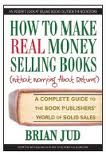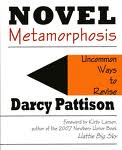This is Part 2 of the three-part series on becoming a niche powerhouse and building a successful business. Part 1 discussed how to find a profitable niche and how to ‘work’ it. This article is about finding your audience and how to build your list. Find Your Audience (build your list) Finding your specific audience before you promote your service or product is a sure way to guarantee sales
Viewing: Blog Posts Tagged with: niche, Most Recent at Top [Help]
Results 1 - 8 of 8
Blog: Writing for Children with Karen Cioffi (Login to Add to MyJacketFlap)
JacketFlap tags: online marketing, article marketing, opt-in, niche, subscriber list, ethical bribe, finding an audience, Add a tag
Blog: WOW! Women on Writing Blog (The Muffin) (Login to Add to MyJacketFlap)
JacketFlap tags: readers, book marketing, niche, finding your audience, marketplace, Add a tag
Why do you write?
To express yourself.
To explore an idea.
To create a character that interest you.
To explore a difficult topic like immigration, abortion, war, alcoholism.
To weave a spell.
To leave a legacy.
To explain your life to your grandchildren.
To explain how to do something.
To scare someone.
To make someone swoon.
The reasons we write are endless, they are personal. And each reason is valid. But if you want to cross over into the published world, you need one more reason: to sell. To think commercially is a problem for many writers.
For example, let’s say you want to write nonfiction books for kids. The National Science Teachers Association and the Children’s Book Council released their list of Outstanding Science Trade Books for 2013, about 58 books they deem literature that can be used in science classrooms, the best of science and the best of literature combined. I was lucky enough to have my picture book, Desert Baths, named to the list.
In other words, there are big gaps in the scientific disciplines covered and there’s a possible window there for a topic, if it’s done well. On the other hand, nature/animals/biographies are proven best sellers, so it may be best to stick to those categories. Ultimately, the decision is up to you, but these are the sorts of things that you need to consider about when you think commercially.
Or, take for example, the popularity of The Hunger Games. Are dystopians still selling? Yes. But their popularity is probably waning a bit and by the time you write, sell and have published a dystopian, it may be the tail end of such books. Thinking commercial means going beyond just a description of a genre to the inner workings of the story to see why it worked. It’s a story of self-sacrifice, courage, facing unbeatable odds as an underdog—and finding a way to come out on top. Its themes are war, authoritarian governments, personal responsibility. The characters are realistic, engaging, sympathetic.
What if you keep those story elements, but recast them as you switch the genre to science fiction, fantasy, historical fiction or even a contemporary. Thinking commercially does NOT mean copying the latest fad. Rather, it’s working to connect with a wider audience. Is your book about an alcoholic step-mother? How can you connect that to a wider audience? What if the story plays off the Hansel and Gretel stories, the step-mother is the witch? Would that stretch out the scope of the story enough to bring in a wider audience? What if the President of the US is the father and his new bride is the step-mother?
Thinking commercially means finding niches in the marketplace that you can fill; it means reaching for a wider audience than your first attempts; it means lifting up your eyes from the keyboard and looking out at the reader to ask, "How can I tell a story that touches you on a deeper level?" That is thinking commercially.
----
 Darcy Pattison blogs about how-to-write at Fiction Notes and blogs about education at CommonCoreStandards.com
Darcy Pattison blogs about how-to-write at Fiction Notes and blogs about education at CommonCoreStandards.comBlog: Darcy Pattison's Revision Notes (Login to Add to MyJacketFlap)
JacketFlap tags: publishing, book marketing, Darcy Pattison, indie, novel revision, niche, alternate, mims house, Add a tag
This week, I’ve let writers tell their own stories of alternate publishing. Today, I tell my story. This is part 8 of 8.
Alternate Publishing Series TOC
- Alternate Publishing: POD to Finish a Series
- Alternate Publishing: Niche Marketing of Nutrition for Kids
- Alternate Publishing: Historical Fiction
- Alternate Publishing: Ebooks
- Alternate Publishing: Book Apps
- Alternate Publishing: Games and Educational Resources
How to Write Revise a Novel
In 1999, I started teaching the novel revision retreat, unknowingly kicking off a fad in writing retreats of addressing a whole novel, not just a chapter of a scene. I became known for the shrunken manuscript technique, which enables writers to “see” their entire novel at once. The success of the retreat was gratifying, with many writers seeing their debut novels come out and establish their careers.
There was always a workbook, but it was a work in progress for about eight years. Then, it was time to look for a publisher for it. But here’s the problem: most publishers go for the beginning writer market. It makes sense. For every 1000 writers who set out to write an entire novel, about 100 make it. Of those, perhaps 10 will realize the need for revision and perhaps one would actually buy a book about revision. The market was small and publishers like Writer’s Digest couldn’t successfully publish it. But given my built in audience and the buzz surrounding the retreats, I thought I could publish it and make money doing it. I established Mims House, a niche publisher, named after the Historic Quapaw District house where I have my office. From the Blue House, I published, NOVEL METAMORPHOSIS: Uncommon Ways to Revise. As expected, it hasn’t sold thousands, but it has sold hundreds–over a thousand copies–and continues to sell at a steady pace, intermingled with spikes when I teach a retreat and participants go home and tell friends about the book. (Word of Mouth is still the best way to sell bo
But given my built in audience and the buzz surrounding the retreats, I thought I could publish it and make money doing it. I established Mims House, a niche publisher, named after the Historic Quapaw District house where I have my office. From the Blue House, I published, NOVEL METAMORPHOSIS: Uncommon Ways to Revise. As expected, it hasn’t sold thousands, but it has sold hundreds–over a thousand copies–and continues to sell at a steady pace, intermingled with spikes when I teach a retreat and participants go home and tell friends about the book. (Word of Mouth is still the best way to sell bo
Blog: Darcy Pattison's Revision Notes (Login to Add to MyJacketFlap)
JacketFlap tags: publishing, resources, self, how to, indie, novel revision, niche, alternate, Add a tag
Continuing the series about Alternate Publishing.
- Alternate Publishing: POD to Finish a Series
- Alternate Publishing: Niche Marketing of Nutrition for Kids
- Alternate Publishing: Historical Fiction
- Alternate Publishing: Book Apps
- Alternate Publishing: Games and Educational Resources
- Alternate Publishing: Niches
- Alternate Publishing: Links and Resources
Articles to read about Alternate Publishing
Please send me links to add to these lists.
- Ebook pricing considerations, by Steve Bareham. Nice article on the price points for ebooks and the psychology of that pricing.
- Aaron Shephard’s site about the New Business of Self Publishing. A Must-Read site if you plan to become a niche publisher.
- Does EPub Change the 32-Page Illustrated Picture Book? By Darcy Pattison. A look at how picture book structure will change with the new formats.
- Dan Poyntner on Self-Publishing
- Chris Eboch’s Indie Publishing Worksheet”, a worksheet to help you decide whether or not self-publishing is right for you; and if so, what steps should you take next.
Recommended Books
 How to Make Real Money Selling Books Without Worrying about Returns: A Complete Guide to the Book Publishers’ World of Special Sales.
How to Make Real Money Selling Books Without Worrying about Returns: A Complete Guide to the Book Publishers’ World of Special Sales.
A great intro to the world of selling to places besides bookstores.







Great thoughts. I've read so many different viewpoints on this subject from "write what you love and they will come" to a more business "study the market" approach. Maybe the answer is "both".
Darcy--Your advice is so user-friendly. Writers--as you note--sometimes try to ride the coat-tail of the latest fad, but it fizzles out before THEIR book is published. Connecting with the reader, no matter what the genre is--is the most critical thing to do.
By the way, as a third grade teacher, I love Jane Yolen's books on habitats, such as "Welcome to the Sea of Sand," and "Welcome to the Green House" as well as "Welcome to Ice House." I will have to check out your book on the desert.
Thanks for the post. I enjoyed it and--perhaps more importantly--I will use your advice.
Darcy,
Great points--and something that is so important. :) I think it is especially important during the marketing phase--you have to show people HOW your book fits into their lives. (And in the submission stage, you have to show editors/agents how you will do this.) Why are we writers again? LOL
Not only are the reasons for writing pretty numerous, but I think it's okay for them to change. Heck, I change my mind several times a DAY.
Best advice - thinking commercially does NOT mean copying the latest fad. I always want to be an original. :)